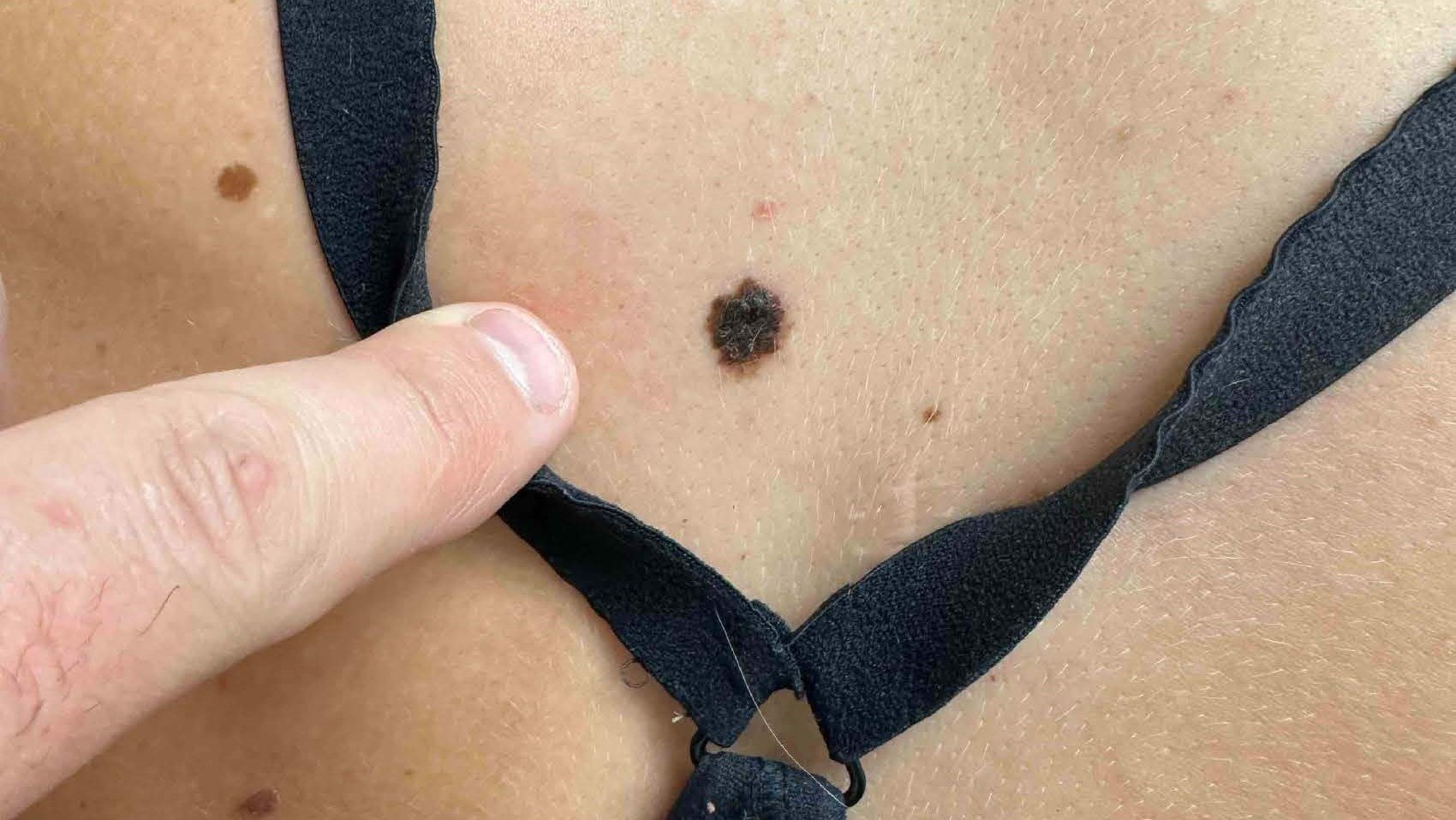Mole or a Melanoma skin cancer?
&srotate=0)
This 30 year old patient reported having a ‘mole’ on her upper back for years. In the last several months it started to change, becoming more black and having irregular borders. She has a history of having multiple atypical nevi removed on her back; these were not cancer. This did not hurt or have any feeling associated with it. She underwent removal in the office. The biopsy showed this to be melanoma, superficial spreading type. She did need a follow up surgery, done at a hospital, to removal a large area of skin around the melanoma and to biopsy lymph nodes to determine if the cancer spread to her lymph nodes.
Melanoma is a painless skin lesion that if left untreated, it will result in death. The typical treatment is a simple in-office procedure to excise the lesion and skin around it and then have skin checks by a dermatologist.
Most melanomas start as a ‘freckle or mole’, that starts to change in some way. These changes can be the ABCDEs of skin checks. The freckle can be Asymmetric, have irregular Borders, changes in Color – especially brown and black, growing with a larger Diameter (1cm or bigger), and Elevated – where the freckle was flat before. There are other features that could lead to a lesion being a melanoma, but these are common findings.
Protect your skin from the sun. You can get melanoma without any significant sun exposure. You can get melanoma even if no one in your family has ever gotten melanoma. It is generally thought to start from radiation damage from the sun and then the body’s immune system allows the damage to stay in the skin location, becoming a melanoma cancer. If you have a lot of mole, you should see a dermatologist for a skin evaluation.
